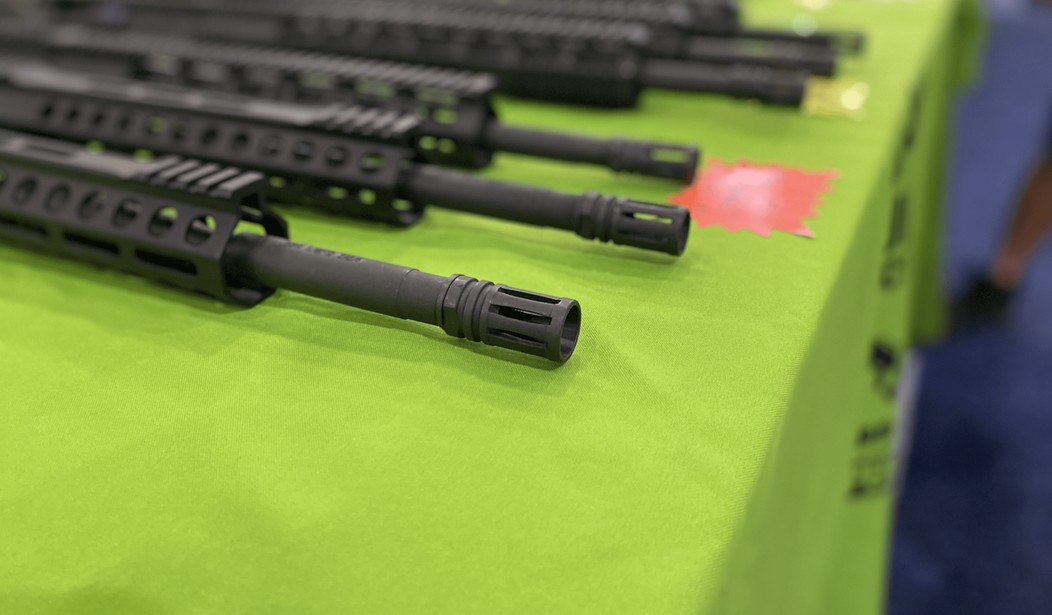With Steve Dettelbach now enshrined as ATF Director, the gun control lobby is wasting little time in pushing him and the agency he oversees to completely re-interpret existing regulations regarding semi-automatic firearms and to regulate them as if they’re machine guns.
The legal argument is found in a new lawsuit filed by the gun control group Brady on behalf of several victims and family members of the Gilroy Garlic Festival shooting in Gilroy, California in 2019. The suit, which names Century Arms and Romanian gun maker ROMARM, alleges (among other things) that the WASR-10 rifle made by Century Arms that was used in the attack on the festival constitutes a “machine gun” under federal law, even though it’s a semi-automatic firearm that discharges one bullet with every pull of the trigger.
In its complaint, Brady cites the NFA definition of a machine gun before claiming that a WASR-10 (and presumably most other semi-automatic rifles as well) “constitutes” a machine gun because “it possess[es] design features which facilitate full automatic fire by a simple modification or elimination of existing component parts.”
For example, a WASR-10 firearm like the Rifle can be easily modified to accomplish this goal by individuals with minimal financial resources and little to no gunsmithing expertise through methods including but not limited to:
-replacing the manufacturer-installed sear system inside the firearm (which enables semi-automatic fire) with a third-party sear system which enables automatic fire;
-shaving down part of the manufacturer-installed sear system to change the way it functions and
-attaching an external device such as a “bump stock” or trigger crank to the firearm.
Whether or not the Rifle used in the Attack was, in fact, modified to fire in a fully automatic fashion, its ready susceptibility to such modification rendered it a “machinegun” as sold, prohibiting its sale to the general public.
It’s pretty evident what Brady’s end game is here. They know they can’t get an “assault weapons” ban through the Senate, but if they can convince the ATF to start treating the most commonly-sold style of rifle in the country as if it’s a machine gun then they don’t have to worry about whether they’ve got the votes in Congress. In fact, if the ATF actually adopted the standard proposed by Brady, tens of millions of lawfully manufactured and legally purchased long guns and semi-automatic pistols would be considered “restricted items” subject to the provisions of the National Firearms Act.
This isn’t the first hint that the gun control lobby plans on using the regulatory power of the ATF to target semi-automatic firearms. Last month the anti-gun website The Trace ran an extensive story on “auto sears” arguing that the agency already has the power to regulate the guns that the illicit product is designed for.
In the late 1970s and early ‘80s, law enforcement agencies started recovering huge numbers of converted RPB Industries SM10 pistols. The popular semiautomatic pistol was a near-perfect replica of the Mac-10 submachine gun, and by shaving down a small internal component with a steel file, it could be modified to fire on fully automatic. At nearly a quarter of the price, it became a hot commodity among drug traffickers.
Law enforcement recovered at least a thousand of the machine guns in crimes across the nation by 1980. That same year, the ATF linked 60 of the guns to drug related murders in Florida alone.
To curb the proliferation of these military-grade weapons, the ATF took an unprecedented step. It reclassified a handful of easily converted semiautomatic pistols and rifles as machine guns. The ruling legally grandfathered the weapons already in circulation, but forced an ultimatum on their makers: Redesign future iterations to be less susceptible to automatic conversion or face selling them under the strict regulations of the National Firearms Act.
Many Democrats say that it’s well within the power of the agency to apply this same strategy to curb the proliferation of modern-day auto sears, like Glock switches, though Luettke and other firearm experts contacted for this story told The Trace that doing so would mean having to regulate dozens of other similarly easy-to-convert handguns.
“A Glock is the most popular handgun in the United States. I think the ATF should explore, as they have in the past, using their regulatory measures to force companies to change their designs or face stricter classifications,” said Representative Eric Swalwell a Democrat from California, who also signed the April letter.
The machine gun argument is just one of several dubious theories advanced by the gun control group in its attempt to do an end run around the Protection of Lawful Commerce in Arms Act, and it’s too early to tell how receptive the courts will be to the litigation. The audience for Brady’s argument goes beyond the courts, however, and reaches all the way to ATF headquarters.
I doubt Dettelbach will adopt the gun control lobby’s point of view before the midterm elections, but if and when Democrats lose control of the House (and potentially the Senate as well) in November, the Biden administration might be much more amenable to abusing their executive branch authority to try to bring semi-automatic firearms under the umbrella of the National Firearms Act, including potentially mandating the registration and payment of a $200 tax of every lawfully-purchased firearm the agency declares should be treated like machine guns.









Join the conversation as a VIP Member